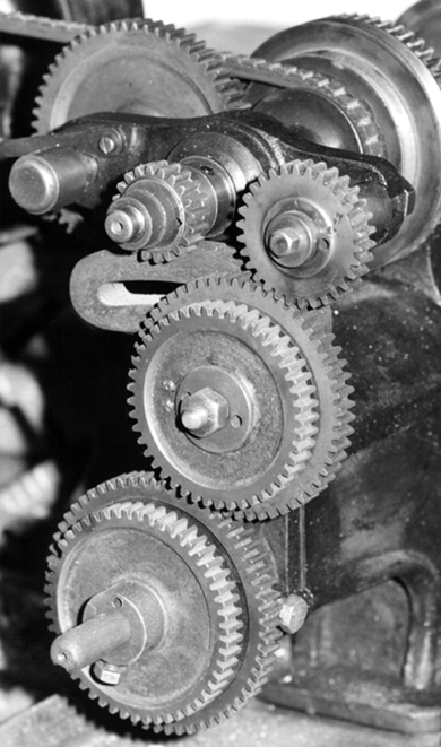Drummond - Rare 4" Flat Bed
EARLY 3 1/2" Drummond Larger Drummonds Round Bed Drummond
Early Original 31/2" 1912 31/2" B Type Headstock Comparison Little Goliath
1921 M Type 1925 M Type M-Type Photo Essay Rare early "double-height bed" Model Still in Use
Quite how this very unusual Drummond lathe ended up in Australia is not clear, but it is known that the more active of the two Drummond brothers, Arthur, visited the continent in the early years of the 20th century and was involved, whilst there, with the design of a lathe headstock with a spindle large enough to pass the pipes used to pump water out of the many wells then in existence. It is entirely possible that amongst his luggage was an unusual 3.5-inch flat bed as well as another "unknown" and possibly unique model - all of which he may have intended to licence for Australian production.
The machine, with its 4" centre height, lathe bears many similarities to its smaller contemporary, the first version of the 31/2-inch B Type made from 1902 until 1912. From detail changes made to the smaller lathe - and assuming that this example might have followed a similar evolutionary pattern - the machine is certainly of pre 1908 origin, and possibly even pre 1900.
Unfortunately, the original name plate, which would have shown the factory address, is missing; the firm were based in the Guildford area of Surrey, England, first at Pinks Hill, then Rise Hill before finally settling at Rydes Hill sometime before 1906. If any reader has a Drummond like this (or any other unknown type) the writer would be interested to hear from you.

|
The lathe was of approximately 4" centre height and admitted 20" between centres. The "beading" around the edges of the bed is a distinctive feature of early Drummond lathes, and must have been designed to add some stiffness to the rather light casting. The layout of the screwcutting arrangements is identical to those on a Mk 1 B Type: a "power shaft", with a dog clutch at the headstock end, runs the length of the bed and engages a gear at the tailstock end to transmit its drive upwards to the leadscrew that lies between the lathe bed ways. |

|
A delicately constructed but rather elegantly designed headstock with a 3-step pulley originally intended to accept a round "rope" or leather-belt. |
||

|
Compound slide rest with T-slotted cross slide and distinctive Drummond-pattern handwheels. |
||

|
The leadscrew dog-clutch operating handle protrudes through the bed immediately below the gap. Underneath is an unnecessary bolt-on support plate - removed from the smaller "B-type" lathe in 1907. |
||

|
The tailstock and leadscrew-drive gears are almost identical in shape to the smaller machine. The tailstock barrel locking arrangement looks to have been improved to a positive-clamping type instead of a simple screw-in bolt. |
||

|
The changewheels are mounted on an L-shaped bracket - with an additional slotted bracket on the headstock to carry the stud and gear necessary to cut left-hand threads. |
||
Drummond - Rare 4" Flat Bed
EARLY 3 1/2" Drummond Larger Drummonds Round Bed Drummond
Photographs: Early Original 31/2" 1912 31/2" B Type
Headstock Comparison
M Type Admiralty Model